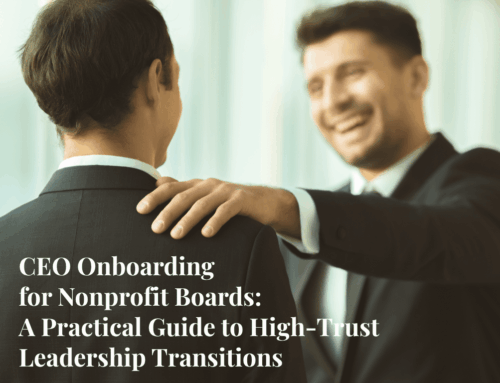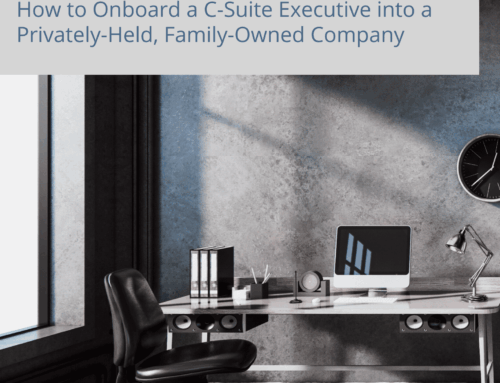The tax, accounting and consulting market has experienced seismic shifts in recent years. Several factors have played into the fast rate of change, including continued economic uncertainty, earnings pressure, aggressive federal and state tax jurisdictions, global regulatory change and more aggressive competition between firms. Regional firms are pushing up market. National firms are breaking the old rules, pushing down market and more willing to use price as a lever to win business. New firm starts, M&A activity in the space, and heavy movement of people between firms offers more options for clients.
Professional service firms are increasingly forced to become serious about competing. And while clients are benefiting from the competitive forces at work, it also is more challenging for them to discern differences between the firms. Recently, a good friend who is CFO of a large international corporation and a former VP of Tax of a global telecom giant told me that he’s had countless tax and accounting partners and senior managers call on him over the years, yet “none of the firms were memorable.” His comment points to a very real issue (or opportunity)-the need to differentiate. Without differentiation, service lines become commoditized, price pressure creeps in and client loyalty can wane.
Blurring between firms has occurred as many took an opportunistic approach to the availability of talent as Andersen went away and the consulting practices of other firms were spun out. SOX created structural change, causing many to change their strategies for selling tax services, driving tax people into the market and to different firms. New practices were “bolted on,” and the partner and professional ranks changed across many firms. One firm’s loss quickly became another’s gain. What has emerged in many instances is a loose confederation of practice areas under an umbrella firm name, with many losing some of their identity and uniqueness and looking from the outside like “one-stop shops” for consulting, advisory and tax services. Remove logos and names, and it’s a sea of sameness.
This is where we as professional service people can take a lesson from the consumer products folks. Differentiation, positioning and branding are terms frequently heard in the halls of MBA schools and consumer product companies. While consumer marketing can’t be holistically applied to service firms, the principles are transferable: being different, better, special and memorable yields competitive advantage, growth, sustainability and higher margins.
Great consumer products companies are intentional and vigilant about telling a consistent story of how they are unique, and they do so at every touch point (packaging, advertising, promotions, etc.). Unlike consumer products though, branding and differentiation for professional service firms is driven largely by their people. Unfortunately, many tax, accounting and consulting professionals don’t have their arms around why their firm is different, better and special; thus, when the gun goes off every morning and the people hit the streets, the firm’s marketing gets muddled.
When I ask many leaders why their firm is special, all too often I hear “we have the best people” or “we have more partner involvement at lower rates.” These are not defensible, sustainable or unique positions for professional service firms. Not surprisingly, further down the ranks, many can espouse why they are great as individual practitioners but struggle to answer the question, “Why my firm over another.” It would make me uncomfortable as a managing partner if my team only emphasized their particular specialty or ability and could not compellingly articulate why the firm was different, better and special.
It is incumbent on firm leadership to verbalize the answer to the “why us” question, then ensure their people, culture, operating systems and pricing line up and reinforce that answer. On the people side, leadership needs to ensure they build their ranks with practice leaders and partners that sell and deliver in a way that builds firm equity. Opportunistic hiring can be great, but in recent years many have approached this process with a mind toward short term growth that is attached to an individual practitioner, gaining some quick revenue hits but diluting the firm’s unique identity and becoming “commoditized” in the longer run.
The best market-facing reputation builders, especially at the practice leader level need to be better than just “functionally” strong with good closing skill. High business acumen, culturally and aspirationally aligned leaders are necessary to build and differentiate the firm as well as their practice. This alignment between a partner’s specialty area, experience and wiring and that of their firm is the key that leads to revenue and margin growth and delighted, long term “sticky” clients. It completes the story of why the partner and the firm are a unique, good fit for the client, and creates scalability for the firm beyond the individual partner’s book of business.
Achieving this requires great intentionality by leadership about the unique, differentiated place in the market they want their firm to occupy. Then it requires equally intentional recruiting and deployment of well-aligned practice leaders and partners into the market who can tell, sell and deliver accordingly. Some firms are doing this very well … others still have an opportunity. Getting serious about being different, better and special is heavy lifting but it yields great long-term value for the firm and its clients.





